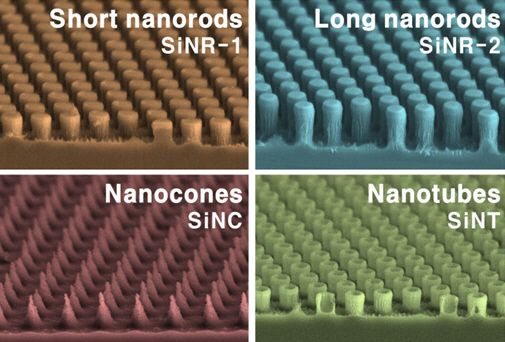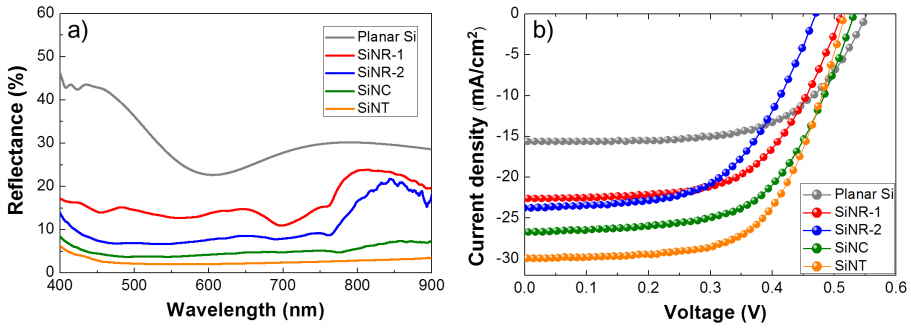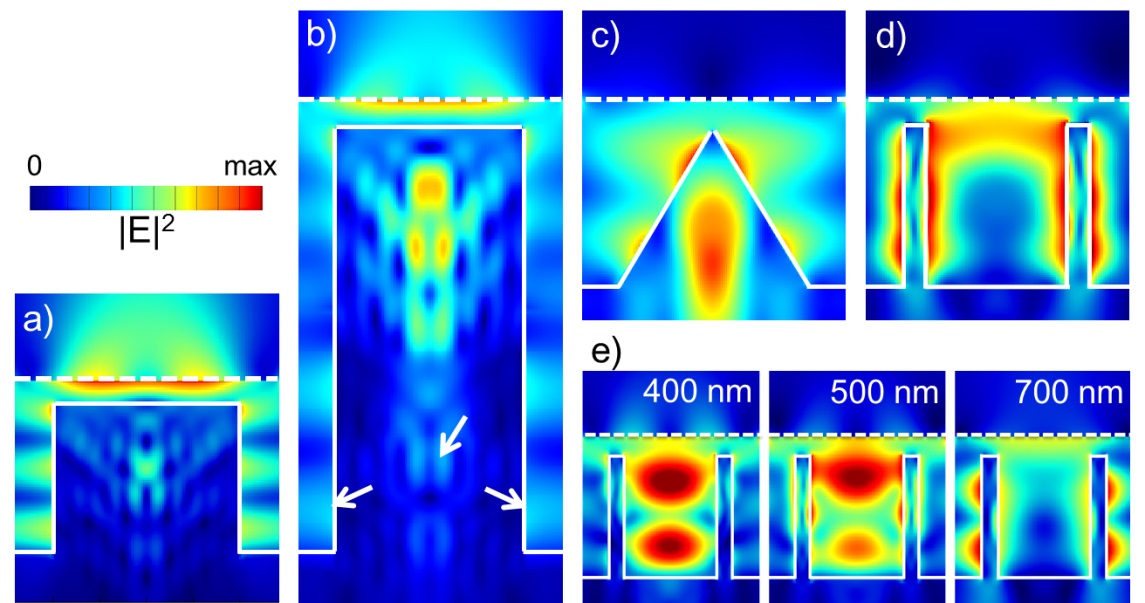Media Center
A multimedia mosaic of moments at GIST
GIST Excellence
Tube-type Silicon Nanostructure Capturing 100% of Sunlight Developed
- 염희라
- REG_DATE : 2014.07.02
- HIT : 812
□ A group of domestic researchers successfully developed a tube-type nanostructure to dramatically increase the light absorption rate of silicon. Silicon is the main material used in hybrid solar batteries, which are emerging as a most promising next-generation energy source. This research finding is expected to maximize the photoelectric conversion efficiency of silicon solar batteries and many other silicon-based photoelectric devices. *A hybrid solar battery (organic/inorganic composite solar battery) is manufactured through the combination of organic and inorganic materials, instead of p-n combination based on inorganic materials. In its manufacturing process, inorganic materials such as silicon are coated with a thin layer of conductive polymers; a high-temperature treatment process is not necessary, and the production cost is lowered. o This research was led by Professor Jung, Gun Young of GIST School of Materials Science & Engineering (corresponding author) and conducted by Mr. Jeong Hee-soo, a doctoral student (first author). It was sponsored by National Core Research Center (NCRC) jointly operated by the Ministry of Science, ICT, and Future Planning and National Research Foundation, and the Pioneer Program for Future Technology. The research finding was published as the back-inside cover article of the June issue of Advanced Materials, a prestigious international journal of material science. (Title: Enhanced Light Absorption of Silicon Nanotubes Array for Organic/Inorganic Hybrid Solar Cells) □ The hybrid solar battery is a next-generation solar battery produced at low cost. It is manufactured by coating an inorganic semiconductor with conductive organic polymers and does not require the high-temperature treatment process. o In the existing manufacturing processes, various silicon nanostructures with a high aspect ratio, such as nanowires, nanorods and nanocones, are used in order to lower the light reflection rate and raise the light absorption rate of the hybrid solar battery o However, nanostructures with a high aspect ratio have rough surfaces that hamper even coating of organic polymers and hence negatively affect the efficiency of the solar battery and the electrode formation process. Therefore, a new nanostructure is needed, which can absorb most of the light at a low aspect ratio enabling even coating of organic polymers. [Figure 1] Comparison of various silicon nanostructures and the efficiency of hybrid solar batteries (clockwise from the top left): Short nanorods (SiNR-1), long nanorods (SiNR-2), nanotubes (SiNT), and nanocones (SiNC) seen under an electronic microscope □ The research team found that the tube-type silicon can drastically increase the surface to absorb light at a low aspect ratio and so developed silicon nanotubes where organic polymers are evenly coated by applying a nanoimprinting technology. o They compared silicon nanorods and nanocones used to make hybrid solar batteries and found out that nanotubes can trap much more light than those existing materials at a certain size. Hybrid solar batteries based on nanotubes improved the photoelectric conversion rate by up to 13% compared with existing batteries made with nanorods and nanocones. 

[Figure 2] Comparison of light absorption rate and electric characteristics of hybrid solar batteries manufactured with different silicon nanostructures [gray: flat silicon (planar Si), red: short nanorods (SiNR-1), blue: long nanorods (SiNR-2), green: nanocones (SiNC), yellow: nanotubes (SiNT)]
a) Light reflection rate of solar batteries made with different nanostructures: A lower reflection rate (Y axis) means better light absorption, and nanotubes show the lowest reflection rate (yellow).
b) Current-voltage graph to measure the efficiency of solar batteries: The efficiency of solar batteries is in direct proportion to the product of the X-intercept and the Y-intercept, and the nanotubes-based solar batteries show the highest efficiency among different types of solar batteries.
□ The research found a new nanostructure to dramatically raise the light absorption rate of silicon, thus suggesting a new way to enhance the efficiency of not only solar batteries but also other optical devices based on silicon.
o Professor Jung, Gun Young said, “The significance of this research finding is that we found a new inorganic nanostructure to utilize light almost 100%. This finding will make a big contribution to the commercialization of hybrid solar batteries which are less expensive to make and are more efficient.”

[Figure 3]
Simulation to analyze the electromagnetic field of various silicon structures when a 600 nm wavelength is applied. Areas which absorb more light turned red. (Each of the pictures is the vertical section of different nanostructures.)
a) short nanorods, b) long nanorods, c) nanocones, d) nanotubes, e) electro-magnetic field of nanotubes simulated by 400, 500 and 700 nm of light wavelengths.
Nanotubes (d and e) showed red in most areas. This simulation result shows the light absorption pattern of nanostructures and offers clues to where in the silicon nanostructures electrons are generated.